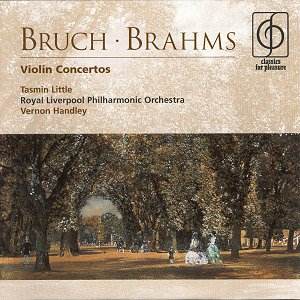 Composer: Otto Sauter
Composer: Otto Sauter
Works: Transcriptions of Vivaldi, Telemann, Handel, Scarlatti, Valentine, Corelli
Performers: Otto Sauter (piccolo trumpet), David Timm (organ)
Recording: March 26-28, 2001, Waltershausen, Dtadtkirche “Zur Gotteshilfe”
Label: EMI Classics CDC 5 57222 2
Otto Sauter’s “World of Baroque Vol. III” showcases a compelling collection of transcriptions from Baroque luminaries including Vivaldi, Telemann, and Handel, all brilliantly reimagined for the piccolo trumpet supported by organ. The choice of repertoire reflects both the richness of the Baroque tradition and Sauter’s keen interest in expanding the trumpet’s capabilities through this unique instrument. The piccolo trumpet, or trombino, was a staple of the Baroque era, allowing for remarkable high register excursions—an aspect that Sauter exploits to great effect.
Sauter’s performance exhibits an extraordinary command of the piccolo trumpet, particularly in his interpretation of Vivaldi’s Concerto in G, RV 310. The fluidity with which he navigates the intricate semi-quaver passages is astonishing, displaying not only technical prowess but also an understanding of the stylistic nuances inherent in Vivaldi’s work. However, the organ accompaniment provided by David Timm occasionally falters. For instance, in the second movement of the Vivaldi, Timm’s staccato articulation feels abrupt and lacks the seamless legato one would expect from a string ensemble, resulting in a somewhat disjointed musical experience. This misalignment highlights the challenges of arranging orchestral works for a duo format, where the organ’s role seems less a collaborative partnership and more of a supporting act.
The contrasts in dynamics and timbre between Sauter’s trumpet and Timm’s organ present a mixed bag throughout the recording. In the Telemann Sonata in C, the organ’s flute stop initially appears delightfully complementary, heightening the dialogue between the instruments. However, Timm’s choice to emphasize the two-foot flute stop in the Scarlatti results in an unsatisfactory sonic clash, lacking the rich harmonic depth one anticipates. The engineering, while generally clear, does not compensate for these interpretive discrepancies. The church’s acoustics, with minimal reverberation, expose the organ’s more percussive tendencies, detracting from the fluidity essential to Baroque performance practice.
The performance of the less frequently heard Robert Valentine piece emerges as a highlight, offering a refreshing contrast amidst the more virtuosic selections. The minor key and less flamboyant passages allow for a more introspective and nuanced interpretation, revealing Sauter’s ability to adapt his style according to the work’s demands. The overall balance between the instruments could have been better achieved, as the organ often overshadows the trumpet’s delicate phrases, leading to a sense of imbalance in the musical dialogue.
Sauter’s virtuosity is never in question, yet the recording does raise the issue of interpretive depth. The energy and brilliance of his playing are undeniable, but the disc often feels like a showcase rather than a fully realized dialogue. The “Duo All’Armi” recording I recently heard offers a more cohesive experience, where the interplay between trumpet and organ feels more like a partnership than a soloist and accompanist scenario. While Sauter’s technical achievements on the piccolo trumpet are impressive, the overall presentation may leave listeners desiring a greater sense of collaboration and variety in dynamics.
The recording ultimately serves as a testament to Sauter’s formidable skills while simultaneously illuminating the complexities of arranging Baroque music for modern instrumentation. While it offers moments of brilliance, the inconsistency in interpretative choices and the organ’s occasionally overpowering presence result in a performance that, despite its merits, may not resonate with every listener.



